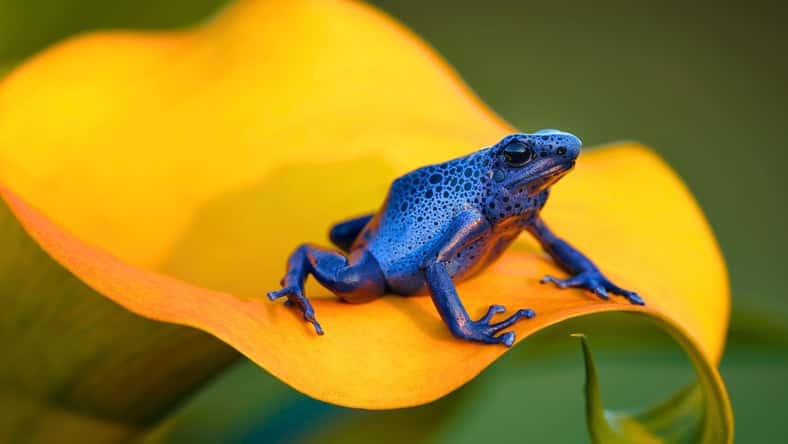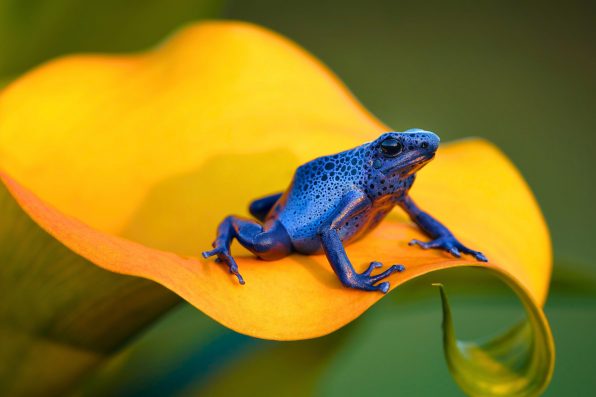Poison Dart Frogs Don’t Just Pack A Poisonous Punch, Holding Enough Toxins To Paralyze Or Kill Enemies, But They Also Rapidly Tap Dance With Their Middle Toes, A Behavior That Might Be Used To Manipulate Prey

Though they may be tiny, measuring between 0.75 and 1.5 inches, poison dart frogs pack a mean punch, holding enough toxins to paralyze, or even kill, anything that dares to cross their path.
Poison dart frogs are notable for their vibrantly colored bodies, which are directly correlated with the toxicity of the species. Potential predators take their bright coloration as a cue to stay away from them.
Another outstanding feature that poison dart frogs display is their ability to tap the middle toes of their hind feet rapidly. The curious behavior has captivated scientists, and some of them have set out to determine why the frogs practice this toe-tapping movement.
Biologists from the University of Illinois Urbana-Champaign observed a colorful species known as the dyeing poison dart frog. They could tap up to 500 times per minute, which is around eight taps per second, and more than three times faster than the song “Shake It Off” by Taylor Swift. The study suggests that the presence of prey influenced toe-tapping.
The researchers recorded 22 of the frogs as they were being fed live fruit flies. The frogs tapped more when there was food around—about 389 times per minute.
When no food was present, their average taps per minute were approximately 50. They also tapped less frequently when they saw fruit flies in a petri dish that they were unable to reach.
In addition, the team found that the number of taps depended on the surface of the frogs’ dance floor. If the frogs were on agar gel, soil, or glass, they tapped their toes less than when they were on leaves. Leaves carry vibrations much better.
The scientists believe that the frogs could be tapping to startle their prey and make them move so that they’re easier to detect.
Another idea that other scientists have considered is that the vibrations caused by toe-tapping could lure prey closer. A separate team of biologists from the University of Magdalena in Colombia used an accelerometer to record the toe-tapping vibrations of yellow-striped poison frogs.

janstria – stock.adobe.com – illustrative purposes only, not the actual frog
They discovered that about 37 percent of frogs accelerated their toe-tapping before attacking prey. Frogs with longer middle toes were more likely to display the behavior.
The Magdalena researchers hope to conduct further studies to figure out whether the tapping really is a deliberate manipulation of prey behavior.
In a study published in 2023, Lisa Schulte and Yannis Köning, two researchers from the Goethe University in Frankfurt, Germany, experimented with green and black poison frogs, showing that certain types of prey, such as crickets and smaller fruit flies, triggered the frogs to tap.
More research is needed to determine if toe-tapping helps the frogs catch prey or if they’re simply just excited about the prospect of food.
Sign up for Chip Chick’s newsletter and get stories like this delivered to your inbox.
More About:Animals





